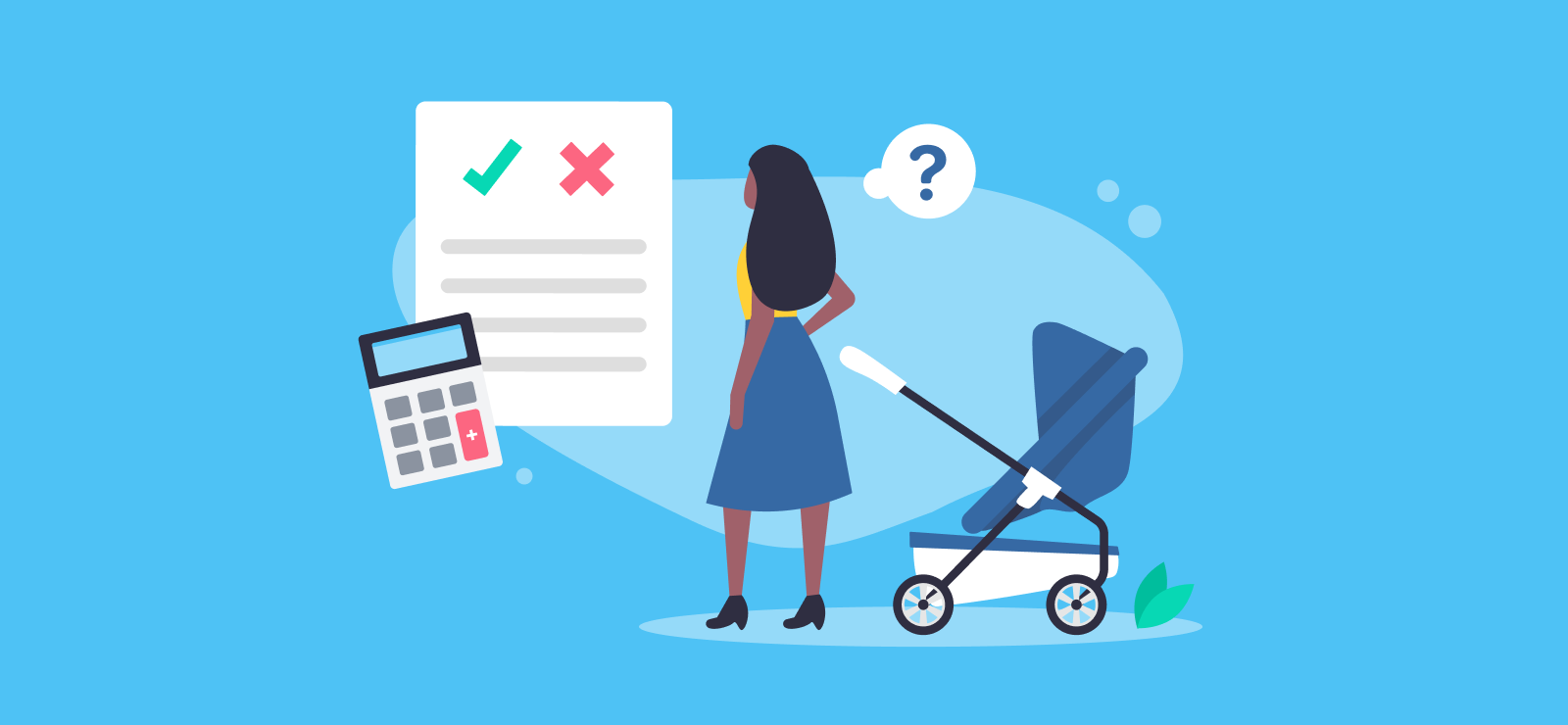

Maternity Pay for Self-Employed People
Being self-employed can offer the kind of freedom and flexibility many of us dream about. But if you’re looking to start or grow your family, you’ll need some time off – preferably paid.
The rules around maternity pay if you’re employed are easy to find and generally your employer will guide you. But for self-employed people all is not lost! You should still be able to claim some kind of maternity pay too.
The first thing to know are the differences between Statutory Maternity Pay and the Maternity Allowance. In this article we’ll have a look at this in more detail.
What is Statutory Maternity Pay?
Statutory Maternity Pay (SMP) is paid to pregnant employees during maternity leave as long as they’re eligible. It can be claimed for up to 39 weeks: for the first 6 weeks, it works out at 90% of the employee’s average weekly earnings before tax.
After that, the next 33 weeks are paid at either 90% of their average weekly earnings, or a standard rate set by the government – whichever is lower.
Who can claim Statutory Maternity Pay?
To qualify for Statutory Maternity Pay, an employee needs to have worked for the same business continuously for at least 26 weeks up to the 15th week before the baby’s due date. They must earn at least £125 per week (on average, before tax), as well as have proof of pregnancy like a MATB1 certificate.
If you don’t meet the criteria (for example, if you’re a sole trader or if you haven’t worked as an employee for long enough), it might be possible to claim Maternity Allowance instead.
Can you claim Statutory Maternity Pay as a company director?
Yes, a company director can claim Statutory Maternity Pay (SMP) as long as they meet the criteria we’ve mentioned above. Again, the right amount of notice needs to be provided, as well as a medical certificate like a MATB1 form confirming the pregnancy and expected due date (yes, even if you’re the sole director and person in your company!).
You might also be eligible for other types of parental leave and statutory pay, depending on your circumstances.
How does my company reclaim Statutory Maternity Pay?
To reclaim Statutory Maternity Pay, your company can generally recover 92% of employee SMP payments through the Employer Payment Summary (EPS) that’s submitted to HMRC via payroll. You need to include the total SMP paid to an employee(s) during each pay period in your EPS. In turn, HMRC then offsets this against your National Insurance contributions.
With most of the SMP costs therefore covered by HMRC, you’ll hopefully find there’s less of a financial burden to your business. As with all things HMRC, make sure you keep detailed records and submit everything on time to HMRC, so the reimbursement process is as smooth as possible.
What is the Maternity Allowance?
The Maternity Allowance aims to offer financial stability for mothers during pregnancy and just after childbirth. It can provide vital support to those who might otherwise be ineligible for other types of maternity benefits.
It’s paid by the government to pregnant women and new mothers who aren’t eligible for Statutory Maternity Pay. It’s intended to support women who are self-employed, recently employed, or who have not been with their current employer long enough to claim Statutory Maternity Pay (SMP).
Who can claim Maternity Allowance?
To qualify for Maternity Allowance, women must have been employed or self-employed for at least 26 weeks out of the 66 weeks leading up to their baby’s due date. They also need to have earned at least £30 a week (on average) during 13 of those weeks. The allowance can be claimed as early as 26 weeks into the pregnancy and is payable for up to 39 weeks.
How much can be claimed?
Women who meet the criteria can receive either £156.66 per week or 90% of their average weekly earnings, whichever is lower. For those who are self-employed and have paid Class 2 National Insurance contributions, the amount remains the same. In cases where no Class 2 contributions have been made, a lower rate may apply.
Bear in mind that there’s no flexibility in this unfortunately, so to claim the Maternity Allowance all the criteria must be met. It also cannot be claimed by those who are eligible for Statutory Maternity Pay from their employer, or by anyone who doesn’t have the legal right to work in the UK.
How do I claim Maternity Allowance?
To claim Maternity Allowance, you need to complete the Maternity Allowance (MA1) claim form, which can be downloaded from the Gov.uk website. You can also get one from your local Jobcentre Plus.
When you’ve filled it out, send the form, along with supporting documents such as your proof of income, your baby’s due date, and details of your employment or self-employment, to the address shown on the form.
You might also need to give your partner’s income details if applicable. To make sure payments start on time, it’s recommended you apply as soon as you are 26 weeks pregnant and at least 3 months before your baby is due.
You may be able to claim other benefits too
Let’s face it, pregnancy can be tough, and you may not be able to work as much as you’d like, so it’s worth knowing what else you might be able to claim if you need to.
Although you can’t claim Statutory Sick Pay (SSP) as a self-employed person (because it’s only for employees), you might still be able to get some financial help if you can’t work due to illness. These options include Employment and Support Allowance (ESA) or Universal Credit, depending on your circumstances.
Self-employed people can also take out private insurance policies, such as income protection insurance, which again can help you cover the bills if you’re unable to work for a while.
Learn more about our online accounting services for businesses. Call 020 3355 4047 to chat to the team or get an instant online quote.
Want to learn more?
Subscribe to our newsletter to get accounting tips like this right to your inbox

Read more posts...

The Accountancy Partnership – Our Positive Reviews
15th September 2025We’re proud of our customer reviews here at The Accountancy Partnership The reviews we receive from our customers show how hard we…
Read More
Earning 50k After Tax: Take Home Pay in the UK
9th September 2025£50,000 sounds like a good salary, but after you’ve paid Income Tax, National Insurance Contributions, and a percentage towards your pension –…
Read More
What Happens If I’m VAT Registered and Sell Through an Online Marketplace?
3rd September 2025VAT-registered businesses who use online marketplaces (for example Amazon, eBay and Etsy) to sell to UK customers may be confused over who…
Read MoreConfirm Transactions
The number of monthly transactions you have entered based on your turnover seem high. A transaction is one bookkeeping entry such as a sale, purchase, payment or receipt. Are you sure this is correct?
Please contact our sales team if you’re unsure
VAT Returns
It is unlikely you will need this service, unless you are voluntarily registered for VAT.
Are you sure this is correct?
Call us on 020 3355 4047 if you’re not sure.
Bookkeeping
You will receive our bookkeeping software Pandle for free, as part of your package.
You can use this to complete your own bookkeeping, or we can provide a quote to complete your bookkeeping for you.
Please select and option below:
Call us on 020 3355 4047 if you’re not sure.

